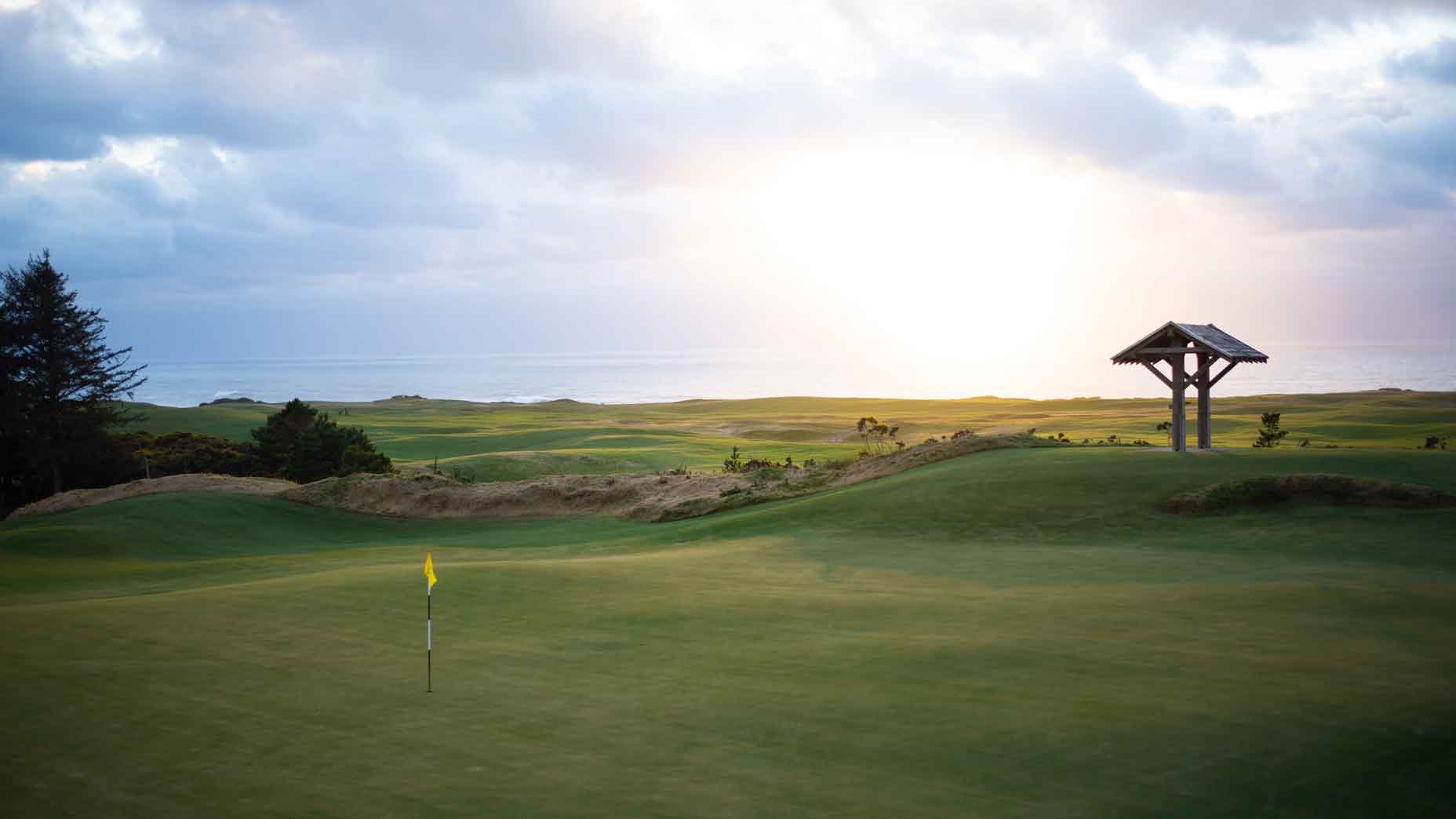The windiest course at Bandon Dunes has an electric past

Bandon Dunes' Sheep Ranch course, left, formerly housed a wind farm, shown here in 1986.
Christian Hafer, Bandon Museum
If you’ve played Sheep Ranch, you know about the wind.
It doesn’t always blow, but it often does, and when it really huffs and puffs on the most blustery course at Bandon Dunes Golf Resort, in Oregon, it asks everything of your game.
Even on calm days, the wind’s influence is evident most everywhere you turn. It’s apparent in the tilt of the trees, and in the absence of sand bunkers, which, partly in deference to the gusty conditions, Bill Coore and Ben Crenshaw left out their design.
It shows up in subtler ways as well. Just to the left of the 11th green, for instance, stands a simple wooden structure with a V-shaped roof: the remnant of a project that lived and died long before Bandon welcomed its first guests.

In the early 1980s, the ground given over to Sheep Ranch today was home to the Whisky Run Wind Farm, a facility installed by Pacific Power & Light Company to test the potential for wind-generated electricity along the coast.
Like golfers tossing grass into the air, researchers had studied the region and determined that this particular coastal stretch held the greatest promise for wind power in the Northwest.
Named for a creek that spills along the south end of the property, the facility featured more than a dozen windmills, which were not universally beloved by locals.
“Not everyone was crazy about having them right along the water,” says Bandon native Gayle Hankwitz, executive director of the Bandon Historical Society Museum.
Nor was anyone aggrieved when the turbines went away. It was soon determined that wet and salty seaside air wasn’t great for them, and that the future of wind farming lay farther inland, where the winds were steadier, if not as strong. In wind farming, as in golf, consistency is more effective than brute power.
By the time Coore and Crenshaw started working on Sheep Ranch, which they completed in 2020, the windmills were long gone. But, Coore says, several concrete foundations remained, along with a long entrails of wiring and cable. While course construction crews removed that wiring, most, if not all, of the concrete foundations remain, buried, Coore says, “under feet of sand.” Other wind-farm features were incorporated artfully into the design, most notably an old service road, which, Coore says, inspired the contouring of the angular 15th green.
Then there’s the wooden structure beside the 11th green. Look at old photos, and you’ll see that it used to shelter a sign with explanatory texts about the wind farm. The sign is no more. But under the shelter there is now a bench, where golfers often sit and watch the sunset.
It’s a sweet outpost, whether the winds are up or not.









